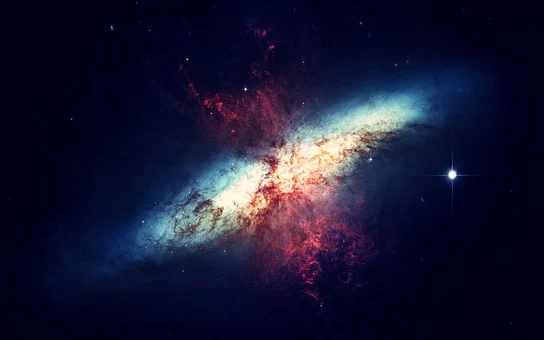Our universe has multiple galaxies. Some galaxies have giant filaments and are linked with each other forming massive clusters known as cosmic webs. In cosmology, galaxy filaments are thread-like structures in the universe forming boundaries of gravitationally bound galaxies.
Image Credits: Pixabay
Researchers at the Australian National University have found that galaxies with a larger central galactic bulge, a group of tightly packed stars at the center of a galaxy spin perpendicular to the filament in which they are embedded; while galaxies with a small galactic bulge spin parallel to the filaments. The study shows how the alignment of galactic bulges can cause merges and how merges can cause spin flips.
Megastructure formation and spin flips
According to the researchers, most galaxies are disc-shaped and have small bulges that spin parallel to the filament. These bulges grow when galaxies merge which usually happens when the galactic spin is parallel to the filament. But sometimes, mergers flip the alignment between the bulge and filament from parallel to perpendicular.
“We think that mergers must be more likely as galaxies move along the filaments towards each other. The direction of these mergers drives the spin-flip,” said Professor Scott Croom, the study’s co-author.
Researchers wanted to know why galaxies spin and how they get angular momentum from the materials they are made of. “Through this study, we can understand how mergers play an important role in the formation of galaxies, both the central bulge component and the spin flipping,” said Dr. Stefania Barsanti, study lead author. “This points to particular formation channels for how galaxies start to spin and how the spin changes as the galaxy evolves.”
Image Credits: Wikimedia
The discovery of spin-flip
Researchers used spectroscopy to identify spin flips and internal changes in galaxies. Spectroscopy involves an optical instrument that uses imaging techniques to create a 3D image of a galaxy. The study used a spectroscope, SAMI (Sydney-AAO Multi-object Integral field) attached to a 3.9-meter telescope located in New South Wales, Australia. With this, researchers surveyed 3,068 galaxies between 2013 and 2020. The data helped them measure the internal motions of stars and gases within the galaxies and their overall spin.
“With the SAMI Galaxy Survey, we have spatially resolved spectroscopy allowing us to map the galaxy, with spectra at many points across the galaxy,” said Dr. Barsanti. “This tells us the internal motions of the stars and gas within the galaxy so we can measure its overall spin.”
The study results show how the motion and position of galaxies are connected, which is important to understand the evolution of the universe. Aligning with this, researchers plan to use Hector, a next-generation spectrograph to survey 30,000 galaxies by replacing SAMI.
The research was published in the journal Monthly Notices of the Royal Astronomical Society.
To ‘science-up’ your social media feed, follow us on Facebook, Twitter, or Instagram!
Follow us on Medium!




